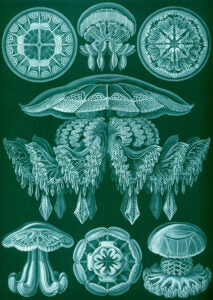In an essentially divided world, these two disciplines have been treated separately however, when studied together the impact one has on the other becomes clear.

“Purkinje neurons from the human cerebellum”, an 1899 drawing by Santiago Ramón y Cajal. Source: Cajal Institute, Madrid
Science has been influencing art from as early as man learned to draw. See for example ancient cave drawings and symbols depicting new scientific findings such as life cycles, evolution, different species, and so on; or the intricate science of communication depicted in the hieroglyphics of ancient Egypt.
Science also helped artists to know that by mixing different paints they could create a new and desired colour, and also taught them how to bring perspective into a drawing.
Art, for its part, was the primal way scientists had to depict new scientific findings—they had to learn to draw in order to illustrate their findings before technology could do it for them, many becoming true art masters to the point of rivaling the greats.
Clear examples of this are the Italian polymath Leonardo da Vinci who produced masterpieces that are mere depictions of his scientific work, the Spanish Nobel Prize and father of neuroscience Santiago Ramón y Cajal, whose hand-drawn illustrations of the brain’s functioning have been displayed in Art Galleries and Museums around the world, and are included amongst the world’s greatest scientific illustrations; and the father of “ecology”, the German physician, biologist, naturalist, artist, philosopher, and free-thinker, Ernst Haeckel, who inspired Art Nouveau with his exquisitely coloured drawings depicting elements of flora and fauna as well as microbes, with breathtaking detail and accuracy.
Ernst Haeckel was born in 1834 in Potsdam, Germany, into a wealthy family. His father, a lawyer interested in science, along with one of his teachers, Otto Gandters, soon introduced a young Haeckel to the literature of authors such as Humboldt and Darwin, thus awakening in him the interest in science that would later define his career.
-

Ernst Haeckel
Haeckel studied medicine in the University of Berlin graduating in 1857, but didn’t devote to it for long. Instead, he decided to pursue his true passion, biology, deeply inspired by Darwin’s evolutionary theory and by physiologist, marine biologist, comparative anatomist and natural philosopher Johannes Müller, thanks to whom he decided to pursue the study of the radiolarians, a group of single-celled animals that Johannes Müller had worked on immediately before his death.
He was a strong proponent of the evolutionary ideas of Charles Darwin and one of the main spreaders of Darwinism in Germany. His work was so popular, that his book, Natürliche Schöpfungsgeschichte (The History of Creation: Or the Development of the Earth and its Inhabitants by the Action of Natural Causes) published in 1868, became the main source of information on evolution before the First World War.
Professor of Zoology at the University of Jena (Germany), the city in which he founded the Philosophical Museum, Haeckel denounced religious dogma, wrote philosophical treatises and coined terms such as “phylum”, “stem cell”, and “ecology”, understood as the science that studies living beings and their environment.
Haeckel traveled the world studying and documenting what he called “the wonders hidden in the depths of the oceans and those only visible through the lens of a microscope”.
Over the course of his career, Haeckel produced around a thousand prints based on his sketches and watercolors. Many of the best were included in the Kunstformen der Natur (Art Forms in Nature), a two-volume book published in 1904 gathering 100 prints of various organisms—many of which were first described by Haeckel himself—that could very well be the foundation of his life project. A visual encyclopedia of nature characterised by its artistic preciousness and scientific rigor, which far from being just “a book of illustrations”, it is but the summary of Haeckel’s view of the world.
Kunstformen der Natur was influential in early 20th-century art, architecture, and design, bridging the gap between science and art. In particular, many artists associated with Art Nouveau were influenced by Haeckel’s images, including René Binet, Karl Blossfeldt, Hans Christiansen, and Émile Gallé. One prominent example is The Beurs van Berlage, a building in the centre of Amsterdam designed by Hendrik Petrus Berlage, which was in part inspired by Kunstformen illustrations.
-

Rene Binet’s entrance gate to the Paris World Exposition, 1900.
-

The Beurs van Berlage by Hendrik Petrus Berlage, Amsterdam.
Prominent scientist also considered one of the greatest illustrators of the natural world, Ernst Haeckel embodies the intimate connection that bonds art and science. Not only his body of work represented an advance in the study of natural history, but it also influenced several generations of artists and architects of the 20th century, thus breaking the frontiers between art and science.













